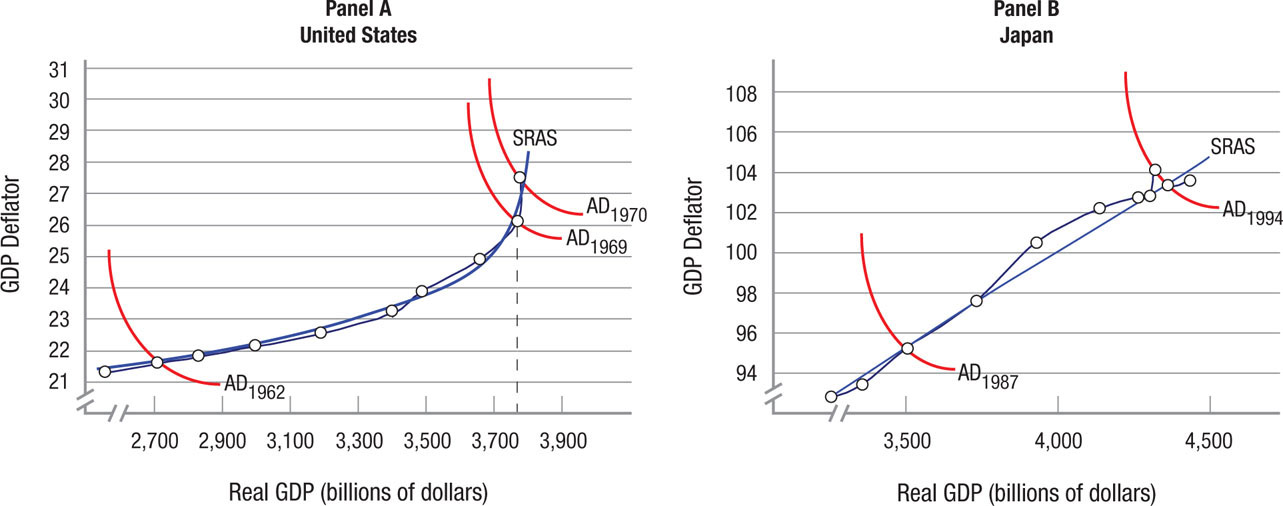
Demand-Pull Inflation, United States (1960s) and Japan (1985–1995) This figure shows two examples of demand-pull inflation for the United States and Japan. Hypothetical aggregate demand and short-run aggregate supply curves are superimposed over the data for the two time periods. The Vietnam conflict expanded aggregate demand in the 1960s, and the U.S. economy experienced inflation over the entire decade and faced rising inflation rates as the economy approached full employment in 1969. Japan experienced demand-pull inflation as it enjoyed a huge trade surplus, which expanded the economy. Japanese policymakers kept interest rates artificially low, fueling a real estate and stock bubble that collapsed in the 1990s, resulting in a decadelong recession.